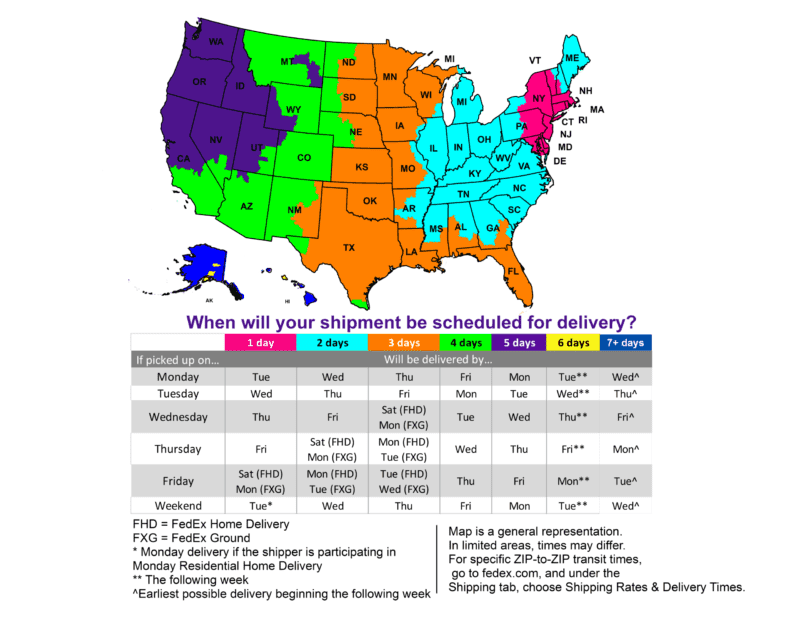In my last post, I covered why LED woodshop lighting is so popular today…
And how to convert your shop over to LED if you’re in the market to do so.
Today, I’m going to discuss what is arguably the MOST important aspect of any LED woodshop lighting consideration, and that is…
Brightness and accuracy of color.
As wood finishers, we’re asked to create or match all sorts of colors, tones, shades and hues…
So, being able to see color accurately is not optional…it’s critical.
If the project looks one way in your shop, but completely different in someone’s home or business…that’s obviously going to create big problems.
Here’s what to consider to avoid them:
Terminology and One Important Calculation:
Before heading off to your local electrical supplier or big box store to select your LED lighting systems, you’ll need to be familiar with the following terms and do one simple calculation.
These terms will help you select the LED lamps (tubes or bulbs, etc.) needed, and this information is normally printed on the LEDs themselves or on the box they come in.
If you can’t find it yourself, ask the staff for assistance.
LUMENS: This is the term used to describe light output, or what we normally refer to as “brightness.”
To calculate the number of lumens needed for general shop lighting of a shop with 8′ ceilings, multiply the square footage by 60 (taller shops require a higher figure; add 10% for every additional foot of height).
This calculation is based only on artificial lighting requirements; if your shop has large open window spaces and you operate primarily during daylight hours, you can get by with less artificial lighting in those areas.
CRI (Color Rendering Index): The closer the CRI is to natural sunlight (100 on the CRI scale), the more accurately your eyes will see colors. It is generally considered that lighting with a CRI of between 90 – 95 provides good color rendering.
However, because different lumens can create an issue with color matching, colorists will sometimes change the lumens to see how the color shifts when brought into a room with a different lighting spectrum.
COLOR TEMPERATURE: This is measured in Kelvin or K for short. For most shop environments, 5000K is considered best. Lighting in the 2000K – 3000K scale is considered too “warm,” and over 6000K is considered too cool or “harsh.”
As a point of reference, incandescent lighting tends to show colors to be “warmer” than in daylight – they’ll make your work read with more yellow and red. Conversely, fluorescent lighting tends to cast a cool, greenish-blue light.
And one other important note: CRI and color temperature exist independently of one another. You can find LED bulbs with high (or low) CRI at warm color temperatures…or high/low CRI at cool color temperatures. So, again, best to “inspect the specs” on the box carefully.
Special Considerations for LED woodshop lighting in your finishing area.
Finish Prep: As I mentioned in Part 1, this area calls for a more specific style of task lighting: horizontally oriented lights which highlight problem areas requiring more attention. If you can’t see it, you can’t correct it!
Finishing: If there’s one area where CRI and lumens is most important, it’s your finishing area. Whatever number of lumens was needed for your general shop lighting will need to be at least doubled and preferably tripled for this area.
Positioning is equally important: the light path should strike the work surface, then reflect back to your eyes to give you a clear view of where the finish is being applied – and how much.
And for safety’s sake, if you spray anything other than non-flammable finishes, you’ll need to consider vapor and explosion-proof lighting fixtures and switches. Check with your local fire department or safety inspectors to find out what is required in your area.
Recognition: I’d be remiss if I didn’t thank David Levinetz of NRG Alternatives (www.nrga-led.ca) for helping me better understand the technical aspects of LED lighting. It can get complex, so it’s comforting to know there are experts like him out there who are willing to help us out.
Jeff and I are here to make your finishing experience and time in your shop more enjoyable and effective.
So, was this information helpful? Have questions or comments about your shop lighting?
Please share your thoughts or read what others are saying in the comments section below.
– Marty Schlosser




Here is a lot more about LEDs and CRI. CRI is not as simple as good/bad. Context (color temperature of indoor lighting and it’s distinction from broad spectrum lighting) & the standards (CRI and extended CRI). Far too easy to wipe a broad brush.
Getting good LED lighting for finishing is expensive. Especially if you want good CRI on EACH of the 15 color samples.
Getting good general lighting isn’t so hard.
https://www.waveformlighting.com/tech/what-is-the-difference-between-cri-and-ra?gclid=EAIaIQobChMImKfV_Iq77gIVhcDACh2x-QRGEAAYASAAEgJO_PD_BwE
https://www.waveformlighting.com/tech/what-is-cri-color-rendering-index/?gclid=EAIaIQobChMImKfV_Iq77gIVhcDACh2x-QRGEAAYASAAEgJO_PD_BwE
https://www.waveformlighting.com/tech/what-is-cri-r9-and-why-is-it-important/?gclid=EAIaIQobChMImKfV_Iq77gIVhcDACh2x-QRGEAAYASAAEgJO_PD_BwE
Michael – Thank you for sharing the links. They are very helpful.
-JW-